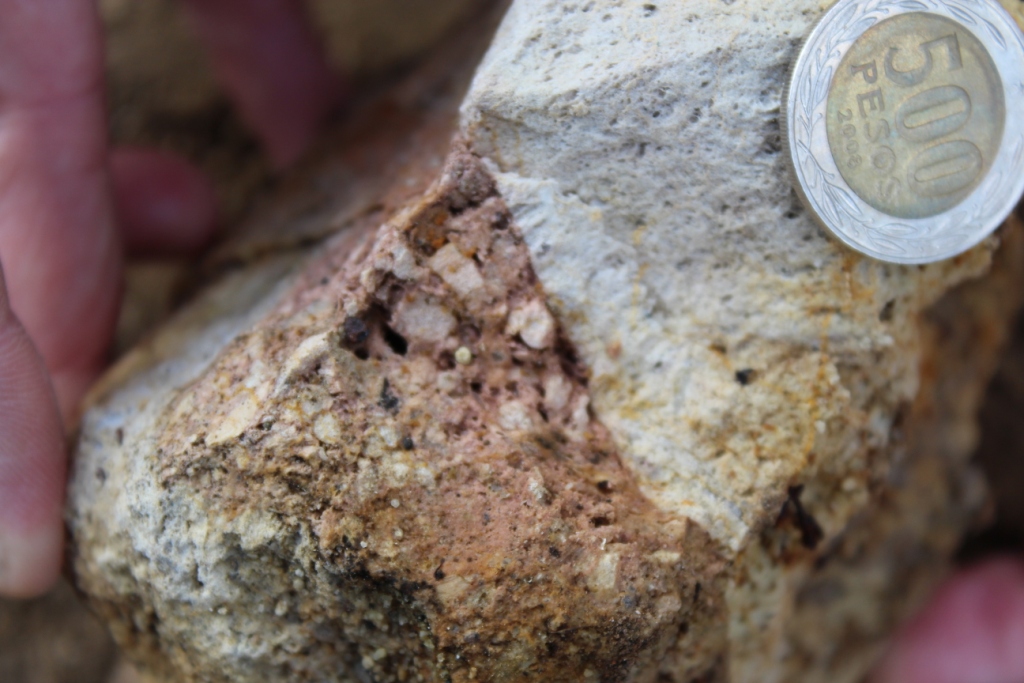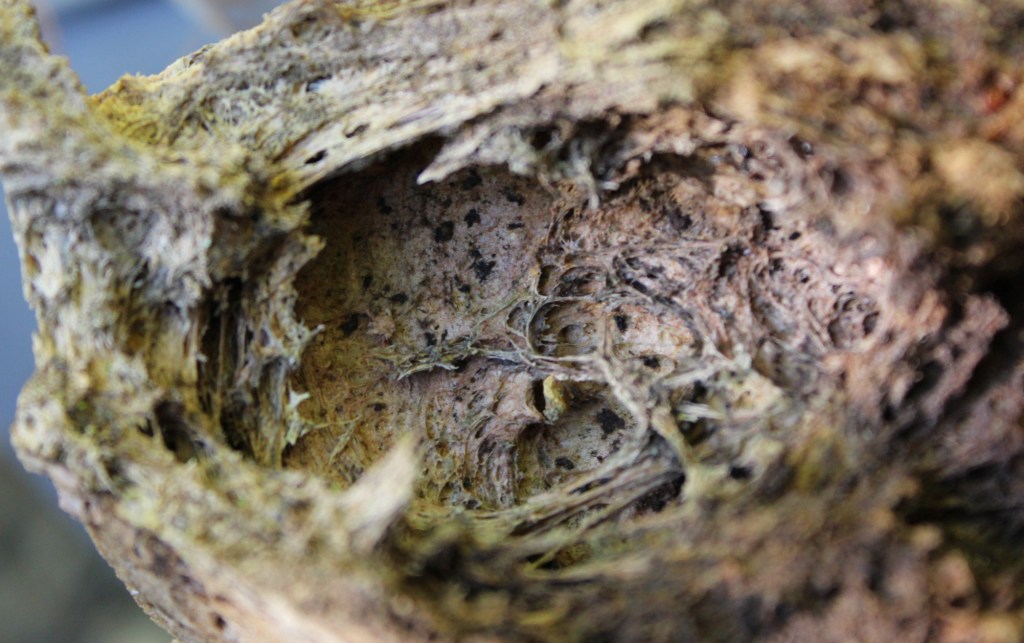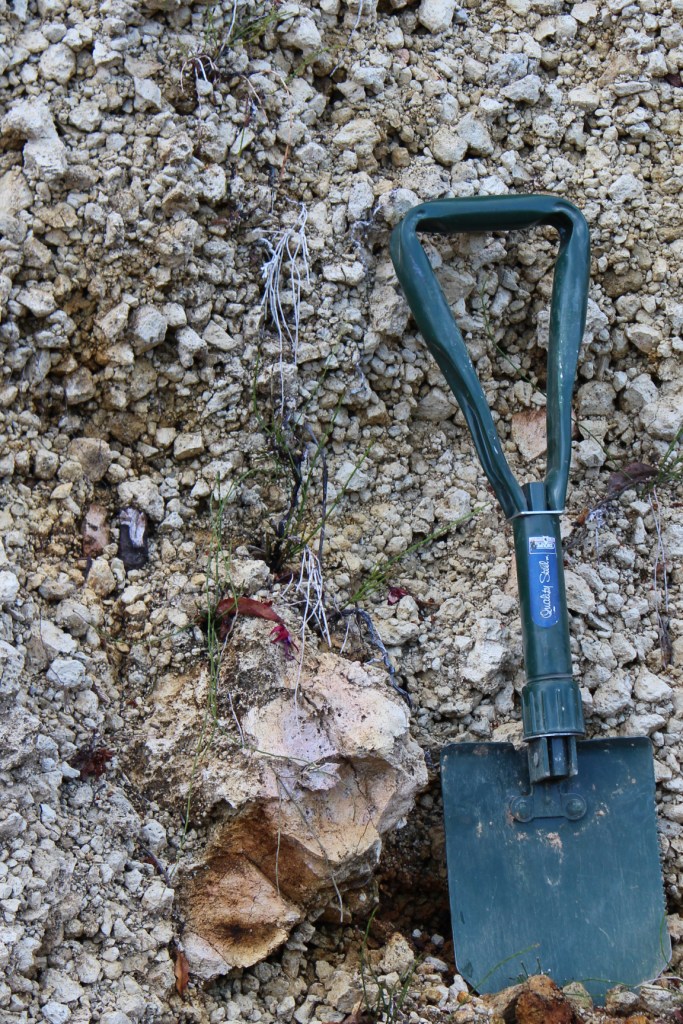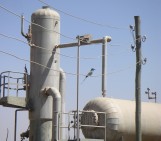
One of the most rewarding parts of fieldwork on volcanoes is when the parts start to fit together, and hunches turn into firmer ideas. When piecing together ancient volcanic eruptions, the process often starts with the discovery of the trace of a new deposit in a road cut section. This might be something as simple as the appearance of a scruffy yellow or orange band that catches our eye as we pass by (as, for example, in the photo below from an earlier blog post).

Karen Fontijn and Harriet Rawson measure up an ancient pumice deposit – the orange layer – in a road cut.
A quick clean up of the surface with a trowel , and running the sample through your fingers, is usually enough to tell whether this really is a pumice deposit – and then the hunt is on. Where did it come from? How big was the eruption? How old is the deposit? Where does it fit into the record of eruptions we already know about?
We can usually get fairly good answers to most of these questions from the field, but to understand why we need to know a little bit about pumice. Everybody knows what pumice is: it’s that frothy rock that floats on water, and many people might even have a small lump of it in a corner of their bathroom. But to the volcanologist, pumice is the grail: a gobbet of magma, frozen in mid-flight that captures in its essence the story of the eruption: where the molten rock came from, how it matured before the eruption began, and perhaps even how the eruption started.

A block of pumice. This pumice sample had a chequered history even before it was erupted. It broke apart, and then welded back together, as it rose up through the volcanic conduit towards the surface. The break separates the pink from the white areas. Coin is about 3 cm across.
Most explosive eruptions produce pumice, and it is this that gets carried high up into the atmosphere in the eruption plume and blown by the atmospheric winds, before raining down onto the surface below to form a pumice fall deposit.
These sorts of deposit are remarkably similar from volcano to volcano the world over. Typically, they are made up of angular fragments of white, cream, yellow or grey pumice that just pile on top of each other where they fell. Pumice blocks can range in size up to about 20 – 30 cm across, but are more usually centimetre to millimetre sized. And because these deposits are formed from strong eruption plumes – similar to that described by Pliny the Younger at Vesuvius in AD 79 – the pumice deposit covers the landscape like a carpet, gradually getting thinner and finer away from the volcano. We can use these changes in thickness and fragment size to work out the size and strength of the eruption; and we can also use the map of the deposit to work out not only where the eruption began, but also the wind direction at the time.
But we can also go further. Pumice is mainly volcanic glass: the molten rock, flash frozen as it erupted. This freezing process often catches the processes that actually cause the eruption in the act. Whether it is the expanding bubbles of volcanic gases that have caused the magma to froth in the first place,

Large bubble in a pumice block, formed as several smaller bubbles coalesced. Bubble is about 3 cm across.
or whether it is the droplet of once-hot basalt magma that might have stirred up the eruption in the first place.

Frozen droplet of dark-grey basalt, on the edge of a large gas bubble, trapped within a larger block of cream coloured rhyolite pumice. Did the arrival of some hot basalt into the rhyolite magma chamber cause the eruption? Bubble is 2 cm across.
The clues to both why an eruption happened, and its consequences at the time, can all be extracted from the buried remains of that ancient carpet of pumice.
After a day of successful pumice-hunting in the field here in Chile, we have returned to base camp (well, it’s actually a very well appointed wooden cabin) laden with samples, and many more questions to think about.



Pingback: Taking the pulse of a large volcano: Mocho-Choshuenco, Chile | volcanicdegassing
Jan
I found quite a bit of white pumice washed up on the beach in Belize in Feb., 2016. Any idea where this originated? The pieces were apricot sized.